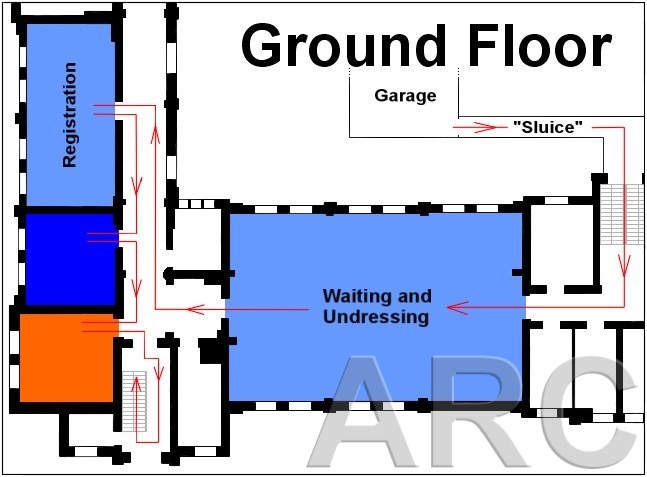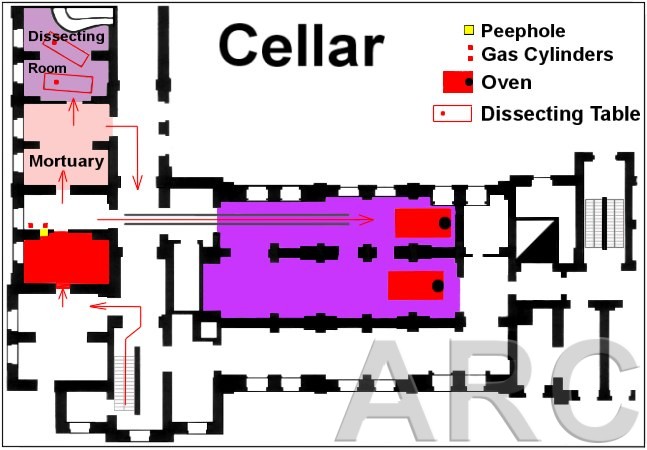In Hadamar the extermination procedure was nearly the same as in other euthanasia
killing centres:
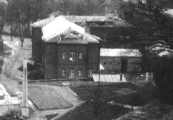 |
| Bus Garage |
Large grey buses, carrying victims from nearby mental homes (the
Zwischenanstalten / intermediate
mental homes
Herborn, Weilmünster, Kiedrich, Idstein, Nassau, Langenfeld, Andernach,
Wiesloch, Weinsberg) to Hadamar, arrived daily.
From the bus garage the victims had to go through the so called "sluice"
(a narrow fenced-in path) to the extermination building. The Hadamar "sluice" became
model for the "sluices" or "tubes", later used in the extermination camps
of
Aktion Reinhard. Approximately 100 victims were killed every day, lasting
until
August 1941.
By
24 August 1941 the killing at Hadamar was
stopped on
Hitler's
orders. The installations in the cellar were dismantled and other
rooms converted back to sickrooms. The surplus staff were ordered
to the East to use their "knowledge" at the newly established extermination camps.
During the second phase of the euthanasia program, the killing at
Hadamar started again. Now the victims were killed by lethal
injections. Until
late August 1942, bodies were buried at the
town's cemetery. By
September mass graves were used, disguised as
single graves located behind the building. During
October 1944 more
than 700 inmates were crowded together at Hadamar.
On
26 March 1945 US Forces captured the town of Hadamar. In the
institute's pharmacy 10 kilograms of "Veronal" and "Luminal" (sleeping pills),
used to kill the victims, were found.
Members of Hadamar's personnel were put on trial in
1945 in
Wiesbaden, and in
1947 in
Frankfurt/Main. They were found to be
responsible for killing approximately 10,000 persons. During the
1950's all prisoners were pardoned.
A number of
Aktion Reinhard personnel served at Hadamar,
these include
Kurt Arndt, Kurt Bolender, Max Bree, Kurt D., Werner
Dubois, Karl Frenzel, Hubert Gomerski, Karl Gringers, Willy
Grossmann, Gottlieb Hering, Josef Hirtreiter, Robert Jührs,
Erwin Kainer, Johann Klier, Fritz Kraschewski (probably), Erwin
Lambert, Werner Mauersberger, Willi Mentz *,
August Miete, Philipp Post, Wenzel Rehwald, Karl Schluch, Erich Schulz,
Hans-Heinz Schütt, Erwin Stengelin, Franz Suchomel, Heinrich Unverhau,
Christian Wirth, Franz Wolf and Ernst Zierke.
In
1983 the
Hadamar Memorial was installed at the infamous building, which
to this day is still used as a mental home.
* See the Mentz Photo Story!
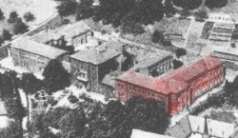
|
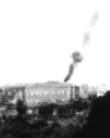 |
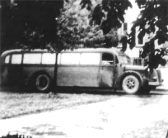
|
| Hadamar |
Trail of Smoke |
GEKRAT Bus |
© ARC 2005










